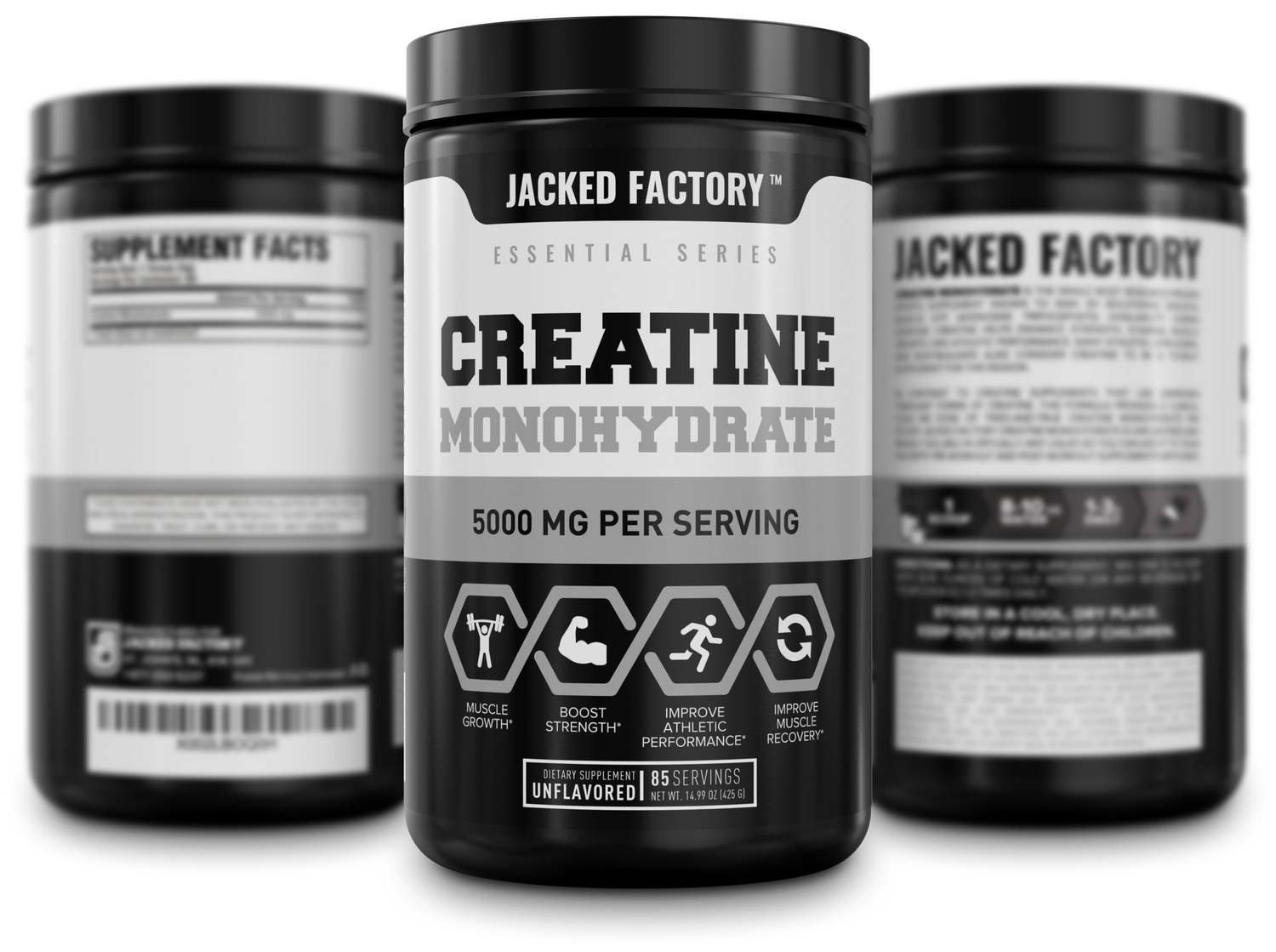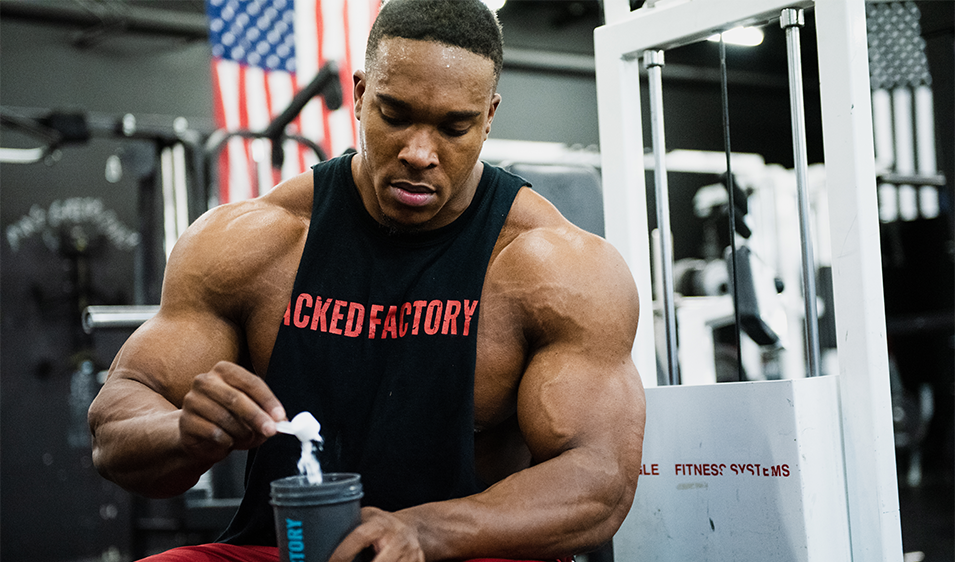Creatine HCl vs. Monohydrate: Which Should You Take?
Creatine monohydrate remains the most thoroughly studied sports supplement, and that will likely never change. An immense body of literature shows that creatine monohydrate can significantly increase muscle creatine stores, thereby improving exercise performance, body composition, and training adaptations [1].
However, a newer form of creatine called creatine HCl (hydrochloride) is making waves in bodybuilding subculture. Preliminary scientific research on creatine HCl is generally promising, with a handful of studies showing it's equally as effective as creatine monohydrate while also being less likely to cause side effects like gastrointestinal discomfort and excess creatine excretion [2, 3, 4].
Naturally, many gym-goers and athletes wonder if creatine HCl is better than creatine monohydrate since the former is a "more advanced" ingredient. Let's look at the science behind these two forms of creatine to see which takes home the crown as the best creatine supplement.
Creatine Monohydrate vs. HCl: What's the Difference?
Creatine monohydrate is a solid form of creatine that contains one molecule of crystalline water per creatine molecule. By mass, pure creatine monohydrate is 90% creatine and 10% water [5].
Creatine HCl is an acid salt form of creatine that has been reacted with hydrochloric acid. This form yields roughly 78% creatine by mass [6].
Yet, creatine HCl has distinct chemical properties that give it advantages over creatine monohydrate. Notably, the HCl form is much more soluble in water than the monohydrate form [7]. Thus, a significantly lower volume of liquid can fully dissolve creatine HCl.
Also, creatine HCl exhibits superior absorption across the intestinal epithelium, making it more bioavailable than creatine monohydrate [8].
Ultimately, the merit of taking creatine HCl over monohydrate is that a considerably lower dose of the former can elicit ergogenic effects commensurate to a larger dose of the latter. Therefore, the HCl form may be the better option for individuals who experience gastrointestinal discomfort from consuming performance-enhancing doses of creatine monohydrate.
How Do Creatine Supplements Work?

Creatine monohydrate and creatine HCl are supplemental creatine forms, a naturally occurring amino acid-like compound found primarily in smooth and skeletal muscle tissue. The average 70-kg (154-lb) adult stores approximately 120 grams of creatine in the form of unbound creatine and creatine phosphate (phosphocreatine).
The body breaks down roughly 1%-2% of its creatine pool per day by carrying out essential physiological functions [9]. Highly active individuals, especially those that train at higher intensities, may exhaust significantly more of their muscle creatine stores.
Eating foods that contain creatine (e.g. red meat, herring, and salmon) is one way to replenish creatine stores directly, but most comes from endogenous synthesis via the amino acids L-glycine, L-arginine, and L-methionine.
But what does creatine do, exactly? In short: It facilitates energy-demanding processes, particularly in muscle cells.
Adenosine triphosphate (ATP) is chemical energy that your cells use to perform basic life-sustaining functions, such as breathing and maintaining a pulse. In skeletal muscle tissue, ATP is constantly being broken down and replenished to keep up with the demands of biomechanical motion.
Every muscle contraction results in ATP degrading to a lower-energy molecule called adenosine diphosphate (ADP), releasing a free phosphate group in the process. Here is where creatine joins the party.
Creatine bonds to that free phosphate group and carries it back to an ADP molecule, thereby regenerating a new ATP molecule to be used for energy. Hence, increasing the amount of creatine in your muscle tissue can positively affect athletic performance and body composition in several ways.
For improving performance and health benefits, however, eating more creatine-rich foods is not an efficient means of saturating muscle creatine stores. As such, supplemental creatine is necessary.
Benefits of Creatine HCl vs. Monohydrate
For starters, supplementing with either creatine monohydrate or HCl will amplify muscle bioenergetics during both aerobic and anaerobic forms of exercise [10]. Supplemental creatine can also speed the recovery process after intense bouts of high-intensity training, such as heavy weight lifting [11].
Essentially, creatine allows you to do train harder, longer, and more frequently. Over time, that can translate to greater gains in strength, muscle mass, and endurance (assuming you're also eating properly).
The most well-documented scientific benefits of taking a creatine supplement include:
- Bolstering strength (e.g. one-rep max) during weight training [12]
- Increasing the time to exhaustion during long bouts of cardiovascular exercise [13]
- Promoting creatine and glycogen retention in muscles, which has been shown to improve athletic performance [14]
- Encouraging muscle growth during a lean bulking phase [15]
- Helping preserve lean body mass during a weight-loss program [16]
But the evidence-based health benefits of creatine go well beyond athletic performance and physique changes. Recent studies have found that creatine supplementation may also:
- Augment the effects of SSRIs (antidepressants) [17]
- Enhance insulin sensitivity in active individuals [18]
- Protect the heart from tissue damage and disease [19]
- Support brain health, including cognitive function and mental acuity [20]
Pretty neat, eh? Creatine monohydrate and creatine HCl are slowly but surely gaining traction as not just ergogenic aids but also holistic wellness supplements.
Recommendations for Dosing Creatine Supplements
For those who are using a creatine monohydrate supplement for the first time, or previous users that took a hiatus, the most common dosing protocol is to front-load creatine by taking 0.3g/kg body weight per day for 5-7 days [21]; for the average 70-kg person, that comes out to about 20 grams milligrams, split into 3-4 daily doses.
Loading creatine monohydrate with megadoses has been shown to increase muscle creatine concentrations by 10%-40% [22]. Once muscle creatine stores are saturated, a maintenance dose of 3-5 grams of creatine monohydrate per day will suffice.
For most athletes and gym-goers taking the HCl form of creatine, a loading dose of 3,000 mg per day during the initial week of use will be plenty. Thereafter, a maintenance dose of 750-1,000 milligrams per day will do the trick.
Note that loading creatine is not a necessity by any means. It's just a strategy to expedite the process of saturating your muscle creatine stores.
"When Should I Take Creatine HCl or Creatine Monohydrate?"
It's generally best to take your creatine supplement post-workout (or before breakfast on non-training days). The main thing is staying consistent regardless of what time of day you take creatine.
If you forget to take your daily creatine dose, you can double up on the following day to help compensate.
Stacking Creatine Supplements with Other Supplements
Research has shown that stacking creatine with other sports supplements may confer better results than taking a creatine supplement by itself. For example, one study found that athletes taking beta-alanine and creatine monohydrate, a combination found in Jacked Factory Power Build, built more muscle and lost more fat than athletes taking creatine monohydrate alone [23].
Another study showed that taking creatine monohydrate with a bolus of simple carbohydrates (dextrose) four times daily for five days increased total creatine uptake in muscle tissue significantly [24].
A more recent stack is creatine combined with hydroxy-methylbutyrate (HMB). The jury is still out on the ergogenic effects of HMB, but a literature review suggests that taking HMB and creatine may create a synergistic effect for enhancing muscle growth and strength [25].
What's the Best Form of Creatine: Monohydrate vs. HCl?
Jacked Factory offers both creatine monohydrate and creatine hydrochloride (HCl) supplements to accommodate your personal preference and fitness goals. But is creatine HCl better than creatine monohydrate? Well, it depends.
In praxis and theory, creatine monohydrate and HCl produce comparable benefits. Both forms are great; you really can't go wrong with either.
To reiterate, the main advantage of creatine HCl is that smaller doses are just as effective as larger doses of creatine monohydrate, and this may be prudent for individuals that experience gastrointestinal discomfort from creatine monohydrate supplements. Creatine HCl is also highly soluble in water, meaning you don't need as much liquid to dissolve the powder fully.
On the other hand, creatine monohydrate remains the gold standard in research, with more-than-enough scientific evidence backing its efficacy and safety. Since Creatine HCl is still a relatively new sports supplement, less research has been conducted on it.
Key takeaway: If you’re looking to increase strength, enhance muscle recovery, and improve body composition, taking creatine HCl or monohydrate will not disappoint. Creatine is one of the most time-tested supplements money can buy, and fortunately, it's very affordable.






Leave a comment
All comments are moderated before being published.
This site is protected by hCaptcha and the hCaptcha Privacy Policy and Terms of Service apply.